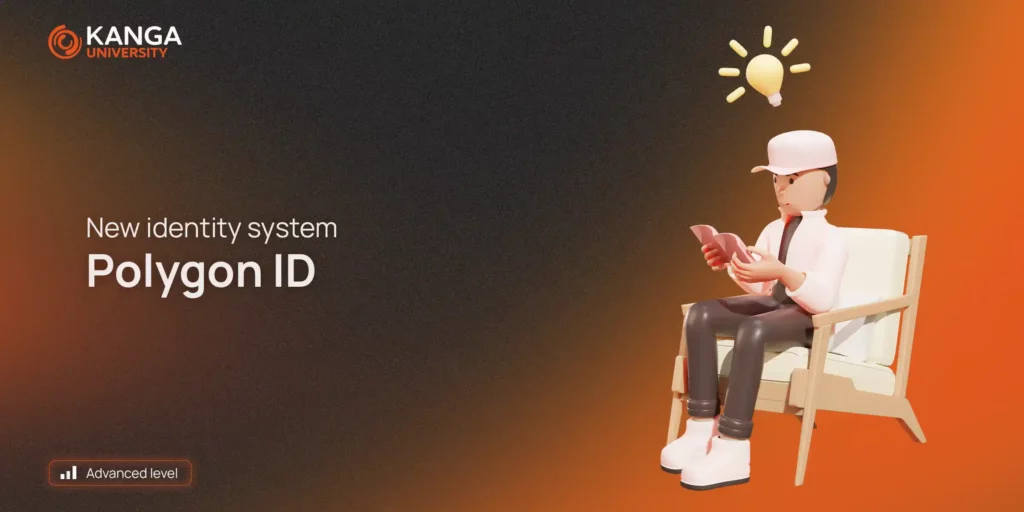
In March 2022 Polygon launched a new service in its ecosystem. We are talking about a new type identity system, Zero-knowledge proof (ZKP). The solution is named Polygon ID and enables users of the ecosystem to verify their resources i identity without the need to disclose personal data.
One of the goals of the service is to stay ahead of regulationKYC (Know Your Customer), which will soon be an indispensable element of every company dealing with cryptocurrencies.
Polygon ID – what is it, and how does it work?
Polygon is a decentralized application layer (dApp) for Ethereum. In March 2022, the network launched Polygon ID, i.e. fully decentralized and private identity which works on blockchain technology.
Polygon ID protects users’ digital identity and gives them complete control over it, keeping virtually all information private. Generates something like an avatar of the user’s personal information without showing it confidential data. In this way, it enables free access to Web3 and the use of its resources.
This innovative technology is the first to be evidence-based Zero Knowledge (ZKP). In its operation, it uses the Iden3 protocol and the Circom ZK toolkit, which provides users with a decentralized and self-sufficient platform.
As Polygon co-founder Mihailo Bejlic said:Polygon ID is private by default. Offers on-chain verification and permissionless credentials. Within digital identities, there is now nothing that connects all these fields. It’s also a great demonstration of how zero-knowledge proofs can help us create a better world.” It’s hard to disagree with him. We wrote about zero-knowledge proofs here.
Bringing Polygon ID to market is done with affordable consumer tools. We are talking about native applications, SDK and white-label solutions.
The private chain will be verified with zkProof Request Language. It’s a protocol that defines the private attributes (e.g. voice) that the user must prove to Polygon. Products that will be equipped with this application include: Polygon ID Wallet, Polygon ID Platform and Polygon ID Connect.
The Polygon ID solution is a great tool for building identity and trust services, i.e. dAccess-as-a-Services, KYC, KYB, a new decision-making and management model, censorship-resistant P2P communication or building an extraordinary player profile in Web3.
Fun fact: Solutions based on a zero-knowledge proof are often very complicated, which is not conducive to their widespread adoption. Polygon successfully dealt with this problem by using Circom 2.0, streamlining the entire process while making it less complicated and accessible.
Polygon ID, as a decentralized competition for KYC
The foundation of the culture of the Web3 ecosystem is privacy and anonymity. No wonder that the rapid development of this industry has attracted the watchful eye of regulators. As a result, this translates into very strict KYC requirements for companies that operate in the Web3 and crypto area.
KYC requires potential users to provide confidential information. We are talking here about identity cards, passports or other documents issued by the government. This carries a massive risk of data leakage and violation of privacy that is so valuable to us.
Given these concerns, Polygon went into action by launching its new ID solution. Throughout the verification process, it removes the middlemen from this process and creates a fully decentralized way for KYC. The end user will create their digital identity, which will confirm his right to access, without having to disclose confidential data.
Benefits
In the new generation Internet, we can’t do anything without our digital identity.
Polygon ID provides us with its complete hiding, while maintaining the benefits of the network. We do not have to worry that it will be stolen or fall into the wrong hands. This is a perfect example of how identity moves from the service provider to the user.
Polygon ID assumes a revolution in the Web3 market, and this is also the goal of the network. At the same time, it is a good impulse for people who avoided the world of cryptocurrencies, fearing for KYC verification.
MATIC
And what about all this with the MATIC cryptocurrency? We can only speculate. Will its value increase with the popularity of Polygon ID, as predicted by analysts and investors? All we have to do is follow the cryptocurrency market and the quotations of this cryptocurrency.
Summary
Polygon ID is a new look at identity in the Web3 space. It is entirely based on zero-knowledge evidence and solves KYC issues on the next-generation internet. Of course, Polygon ID appeared first, but it probably won’t be the only tool of this type in the near future.